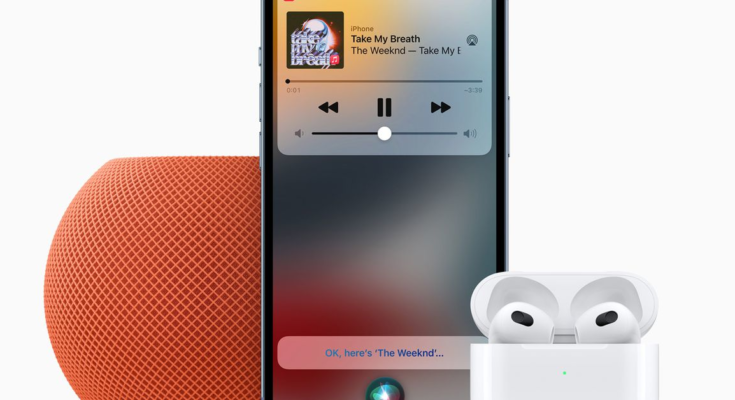The new Apple Music Voice plan that Apple announced at its “Unleashed” event on Monday is causing some confusion. I’m here to help you understand this new, cheaper option, which capitalizes on the power of Apple’s smart voice assistant, Siri (don’t laugh).
Put simply, the Apple Music Voice plan is a voice control-only access to the service’s catalog of 90 million songs. It arrives later this year, and with it, you can play everything — full albums, individual songs, Apple’s playlists; it’s all-you-can-eat Apple Music. The caveat is you have to use your voice to control it, and you have to play it through a Siri-enabled device, such as a HomePod Mini (now in some spiffy new colors), AirPods, or an iPhone.
What it is not is a fee to use Siri to play your own music. If you have tracks purchased through or stored on iTunes, you can still play those with the Apple Music app and control them with voice, as before. What paying for this service does is add access to the company’s streaming catalog for a lower price than its Individual or Family plans.
Apple Music Voice seems best suited to casual listeners who don’t spend hours carefully curating playlists and just want to listen to some music on the fly. While you can request specific songs and albums, you can also just say, “Hey, Siri plays some ’90s Britpop” or “Hey Siri, play something chill.” There’s also access to Apple Radio.
:no_upscale()/cdn.vox-cdn.com/uploads/chorus_asset/file/22938603/Apple_HomePod_mini_hero_5up_10182021.jpg)
The most significant difference between the two plans — beyond price: one is $4.99, and one is $9.99 — is access to the Apple Music app. With the Voice plan, you can’t open the Apple Music app, search for an artist or song, and select a track. Instead, you have to ask Siri to play the song you want.
You can use the Apple Music app to see a queue of recently played music and suggestions for using Siri to control your music. There are also “suggestions based on the listener’s music preferences” that include limited content available for playback through the app, according to Apple. Apple hasn’t shared how exactly this will look or work yet, so we’ll have to wait for the service to roll out to test it.
The cheaper plan also doesn’t let you create your own playlists, manage your playback queue, download songs to your library, scroll the lyrics on your iPhone or iPad, or stream from any third-party speakers (such as Google Nest Hub, which does support the full Apple Music plan). It also won’t play some of the higher-quality audio formats available in Apple Music, such as lossless and spatial audio.
You can use Apple AirPlay to play music through any and all AirPlay 2-enabled speakers you might have — which makes this plan a notch better than Amazon’s similar voice-only music streaming service. That plan — the Amazon Music Unlimited Single Device Plan — costs $3.99 to access Amazon Music’s catalog, but you can only play it on one Echo or Fire TV device.
What’s unique about both these voice streaming plans is that you can just buy a smart speaker — an Amazon Echo or a HomePod Mini — plug it in, and ask it to play music. (You can literally say, “Hey Siri, start my Apple Music Voice trial” and be up and running.) This takes away a lot of friction from getting going with streaming music, providing an easy set-up for someone who’s not very techie. It will probably make a great gift for your parents this Christmas if you’re tired of listening to The Eagles on their FM radio every time you visit.



